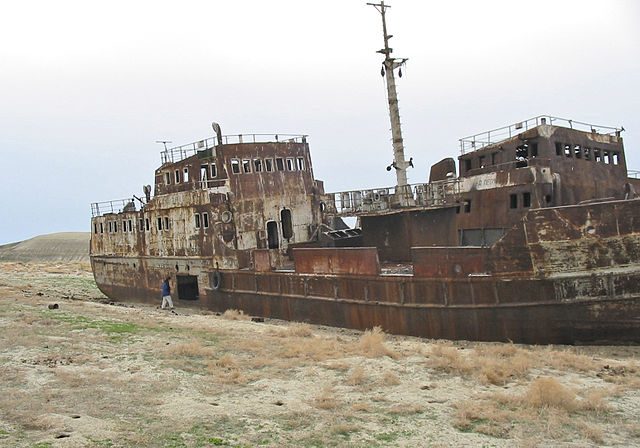The Aralkum desert was once the Aral Sea. Only 50 years ago, the Aral Sea was the world’s fourth-largest lake, between the borders of Kazakhstan and Uzbekistan.
The sea was home to a fishing industry that produced 50,000 tons of fish and fed over 100,000 people. Today, there is a toxic and hostile man-made desert in its place.
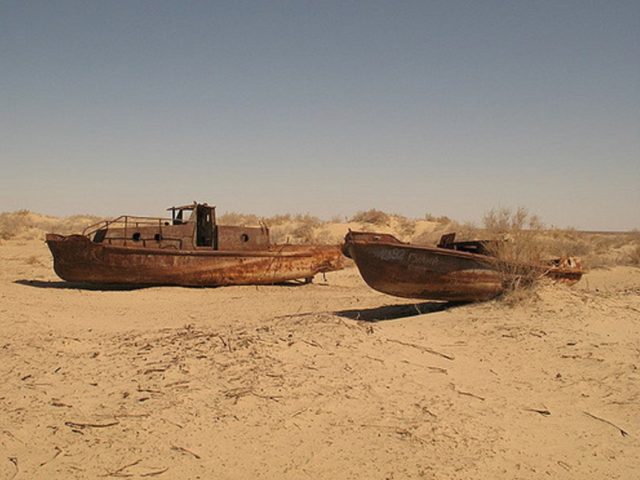
Soviet irrigation canals

In the 1960s, the Soviet authorities had a massive plan for the transformation of the Central Asian steppe.
They then diverted the rivers of Syr Darya and Amu Darya which fed the Aral Sea for irrigation purposes in an attempt to grow rice, melons, cereals, and cotton.
This was part of the Soviet plan for cotton to become a major export. Although irrigation made the desert bloom, it destroyed the Aral Sea. This immediately led to less water arriving at the sea.
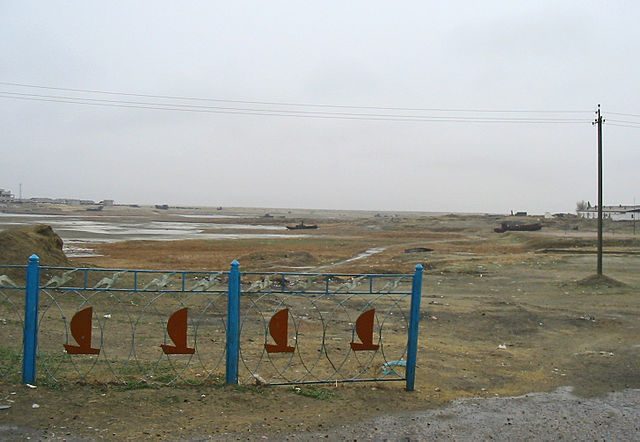
Because of that, the Aral Sea slowly began to disappear. It has since been reduced to less than 10% of its original size, and it is believed that is one of the most catastrophic environmental disasters of all time.
The fishing industry was devastated and the former fishing towns became ship graveyards.
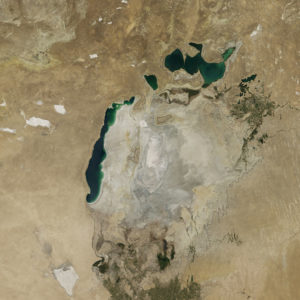
Ship Graveyards
The Aral Sea translates to “Sea of Islands,” named for the 1,100 islands it was once home to. But today the landscape of the Aralkum desert is like a scene from an apocalyptic science fiction movie. It is like Tarkovsky himself made this doomsday movie set.
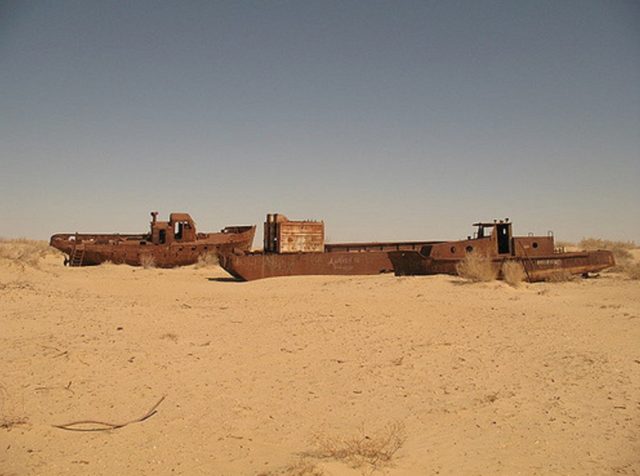
But this is not fiction, this is the reality. The only reminders of the sea are dry, abandoned docks and the corpses of rusting fishing ships buried in the sand under the desert heat.
Fishing boats lie spread on the dry land that was once covered by water. The ships now serve as shelter for travelers or cattle passing through who need to escape from the infernal heat of the desert sun.
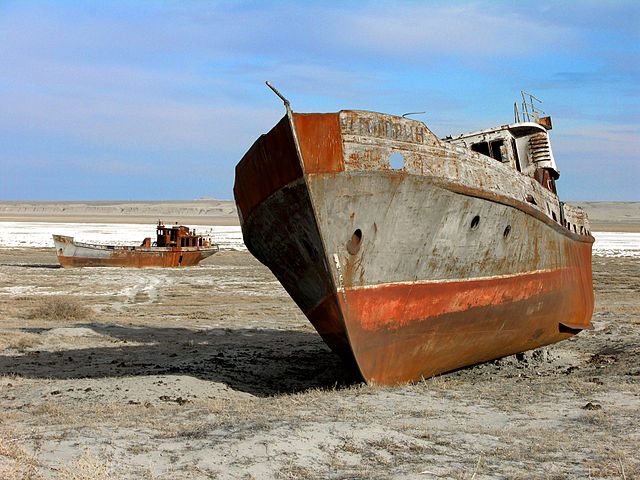
The former port towns are literally dying. The Aral Sea’s death also puts the health of people living on its original shores at risk.
Poisonous dust storms kicked up by strong winds across the dried and polluted seabed have given rise to a multitude of chronic and acute illnesses among the few residents who have chosen to stay.
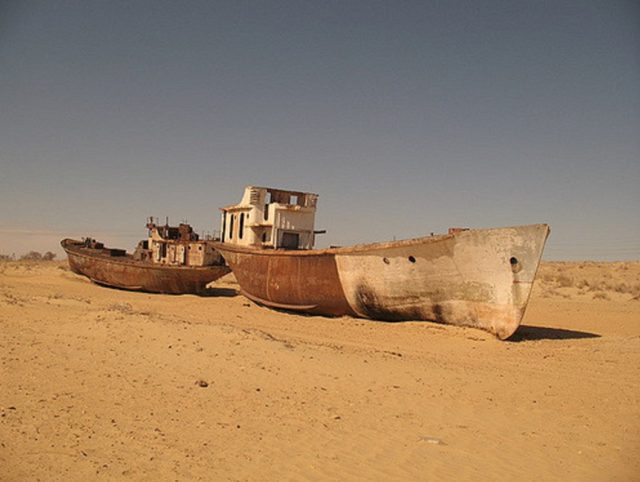
As a local woman, whose husband suffers from chronic bronchitis, “You can’t see salt in the air, but you feel it on the skin, and you can feel it on a tongue”.
The loss of the Aral Sea also made winters colder and summers hotter and drier. A once beautiful natural landscape has become hell on Earth.
